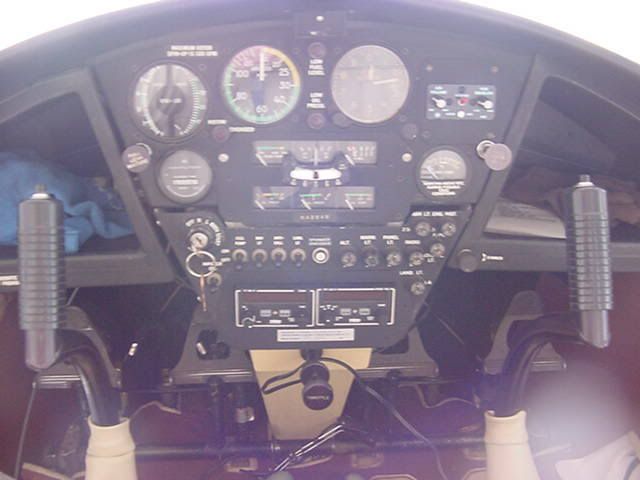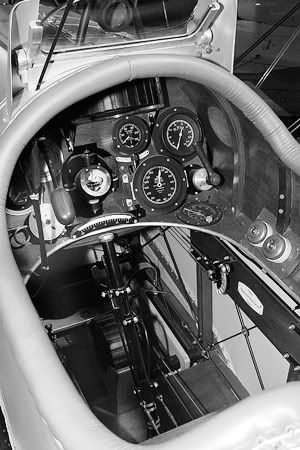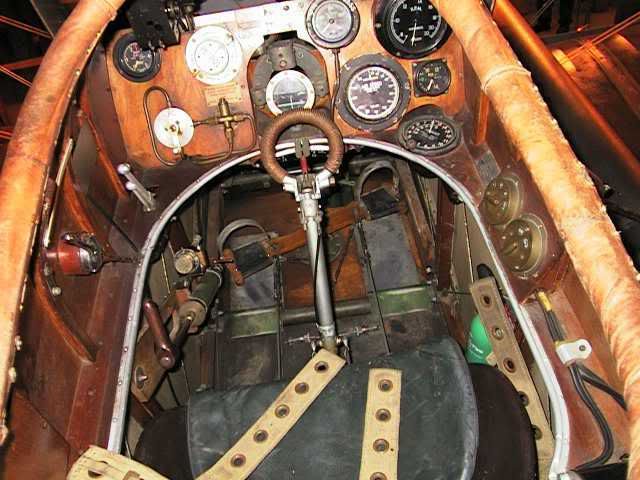What Cockpit? MK V
Join Date: Nov 2006
Location: South of Penge
Age: 74
Posts: 625
Likes: 0
Received 0 Likes
on
0 Posts
Sorry about that - it was done in haste in an attempt to keep the flow going. If you could post again the ref to the list so far I'll check back and see what I can find. In the meantime may I suggest "any other takers...?"
Join Date: Dec 2001
Location: Nottingham UK
Age: 84
Posts: 5,575
Likes: 0
Received 0 Likes
on
0 Posts
What Cockpits presented
Here is the latest list. I hope this works.
Mel
http://www.geocities.com/artificer35...07.html?200728
Mel
http://www.geocities.com/artificer35...07.html?200728
Last edited by MReyn24050; 28th Sep 2007 at 12:17. Reason: List update
Join Date: Dec 2001
Location: Nottingham UK
Age: 84
Posts: 5,575
Likes: 0
Received 0 Likes
on
0 Posts
evansb's challenge
How about the SE5A? Possibly a replica without the normal control column and triggers.
Last edited by MReyn24050; 16th Sep 2007 at 18:40.
Join Date: Dec 2006
Location: Australia
Posts: 210
Likes: 0
Received 0 Likes
on
0 Posts
Yes the link works well thanks Mel! http://us.share.geocities.com/artifi...it.html?200715
Thats over 800 cockpits identified
Thats over 800 cockpits identified

Join Date: Dec 2001
Location: Nottingham UK
Age: 84
Posts: 5,575
Likes: 0
Received 0 Likes
on
0 Posts
You have it Bri. It is the Bristol Bloodhound.
It is the Bristol Bloodhound.

The Bristol Type 84 Bloodhound turned down by the Ministry in favour of the DeHavilland Dormouse nevertheless went on to prove the worthiness of the Jupiter engine.
The Bloodhound prototype returned to Filton for overhaul, it received civil registration and to prove the strength of the airframe but more particularly the reliability of Fedden's engine two Imperial Airways pilots Col F F Minchin and Capt F L Barnard flew the aircraft from Croydon to Filton with the engine sealed. From January 4th until the 8th March 1926 they logged 25,074 miles in 225 hours and 45 minutes. The engine ran faultlessly throughout and Imperial Airways to prove its hot weather ability flew G-EBGG from Croydon to Cairo and back, taking 56 hours for the 5,400 mile trip. They had a few problems with desert landing strips but again none with the airframe or the engine. The Jupiter engine went on to become the most used engine of any manufacturer. The aircraft was later used to test the geared Jupiter VIII using a four balde propellor until finally scrapped in 1931.
You have control
 It is the Bristol Bloodhound.
It is the Bristol Bloodhound.
The Bristol Type 84 Bloodhound turned down by the Ministry in favour of the DeHavilland Dormouse nevertheless went on to prove the worthiness of the Jupiter engine.
The Bloodhound prototype returned to Filton for overhaul, it received civil registration and to prove the strength of the airframe but more particularly the reliability of Fedden's engine two Imperial Airways pilots Col F F Minchin and Capt F L Barnard flew the aircraft from Croydon to Filton with the engine sealed. From January 4th until the 8th March 1926 they logged 25,074 miles in 225 hours and 45 minutes. The engine ran faultlessly throughout and Imperial Airways to prove its hot weather ability flew G-EBGG from Croydon to Cairo and back, taking 56 hours for the 5,400 mile trip. They had a few problems with desert landing strips but again none with the airframe or the engine. The Jupiter engine went on to become the most used engine of any manufacturer. The aircraft was later used to test the geared Jupiter VIII using a four balde propellor until finally scrapped in 1931.
You have control
Thread Starter
Join Date: Aug 2006
Location: Timbukthree
Posts: 13
Likes: 0
Received 0 Likes
on
0 Posts
Thanks Mel. Unusual photo you posted, quite rare I would imagine. I was uncertain if it was a Bloodhound because a book I have said it had two forward firing guns, and a web site said it had only one forward firing gun. The forshortening of the photo makes the wing appear very short.
Here is the next challenge:

Here is the next challenge:

Thread Starter
Join Date: Aug 2006
Location: Timbukthree
Posts: 13
Likes: 0
Received 0 Likes
on
0 Posts
Sorry, not a Bolkow. This aircraft was designed in the 1960s, but serial production didn't commence until the 1970s, where just over 80 examples were produced.






